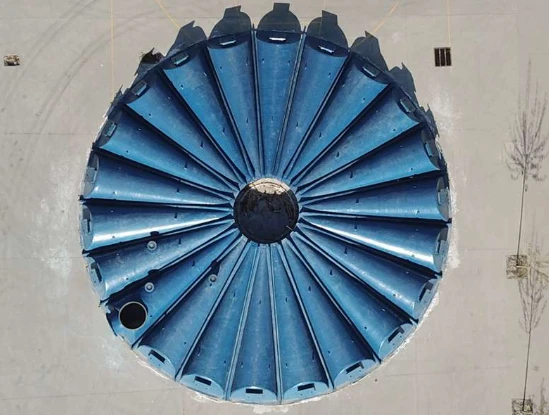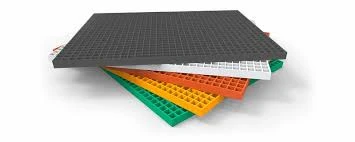
-
 Afrikaans
Afrikaans -
 Albanian
Albanian -
 Amharic
Amharic -
 Arabic
Arabic -
 Armenian
Armenian -
 Azerbaijani
Azerbaijani -
 Basque
Basque -
 Belarusian
Belarusian -
 Bengali
Bengali -
 Bosnian
Bosnian -
 Bulgarian
Bulgarian -
 Catalan
Catalan -
 Cebuano
Cebuano -
 China
China -
 China (Taiwan)
China (Taiwan) -
 Corsican
Corsican -
 Croatian
Croatian -
 Czech
Czech -
 Danish
Danish -
 Dutch
Dutch -
 English
English -
 Esperanto
Esperanto -
 Estonian
Estonian -
 Finnish
Finnish -
 French
French -
 Frisian
Frisian -
 Galician
Galician -
 Georgian
Georgian -
 German
German -
 Greek
Greek -
 Gujarati
Gujarati -
 Haitian Creole
Haitian Creole -
 hausa
hausa -
 hawaiian
hawaiian -
 Hebrew
Hebrew -
 Hindi
Hindi -
 Miao
Miao -
 Hungarian
Hungarian -
 Icelandic
Icelandic -
 igbo
igbo -
 Indonesian
Indonesian -
 irish
irish -
 Italian
Italian -
 Japanese
Japanese -
 Javanese
Javanese -
 Kannada
Kannada -
 kazakh
kazakh -
 Khmer
Khmer -
 Rwandese
Rwandese -
 Korean
Korean -
 Kurdish
Kurdish -
 Kyrgyz
Kyrgyz -
 Lao
Lao -
 Latin
Latin -
 Latvian
Latvian -
 Lithuanian
Lithuanian -
 Luxembourgish
Luxembourgish -
 Macedonian
Macedonian -
 Malgashi
Malgashi -
 Malay
Malay -
 Malayalam
Malayalam -
 Maltese
Maltese -
 Maori
Maori -
 Marathi
Marathi -
 Mongolian
Mongolian -
 Myanmar
Myanmar -
 Nepali
Nepali -
 Norwegian
Norwegian -
 Norwegian
Norwegian -
 Occitan
Occitan -
 Pashto
Pashto -
 Persian
Persian -
 Polish
Polish -
 Portuguese
Portuguese -
 Punjabi
Punjabi -
 Romanian
Romanian -
 Russian
Russian -
 Samoan
Samoan -
 Scottish Gaelic
Scottish Gaelic -
 Serbian
Serbian -
 Sesotho
Sesotho -
 Shona
Shona -
 Sindhi
Sindhi -
 Sinhala
Sinhala -
 Slovak
Slovak -
 Slovenian
Slovenian -
 Somali
Somali -
 Spanish
Spanish -
 Sundanese
Sundanese -
 Swahili
Swahili -
 Swedish
Swedish -
 Tagalog
Tagalog -
 Tajik
Tajik -
 Tamil
Tamil -
 Tatar
Tatar -
 Telugu
Telugu -
 Thai
Thai -
 Turkish
Turkish -
 Turkmen
Turkmen -
 Ukrainian
Ukrainian -
 Urdu
Urdu -
 Uighur
Uighur -
 Uzbek
Uzbek -
 Vietnamese
Vietnamese -
 Welsh
Welsh -
 Bantu
Bantu -
 Yiddish
Yiddish -
 Yoruba
Yoruba -
 Zulu
Zulu
FRP Pipes & Fittings for Shipbuilding - Corrosion-Resistant & Lightweight
This comprehensive guide explores advanced FRP solutions transforming marine infrastructure. Below is a structural overview:
- Critical performance metrics defining marine-grade FRP systems
- Scientific analysis of corrosion resistance properties
- Comparative evaluation of leading manufacturers
- Engineering specifications for custom vessel applications
- Real-world implementation case studies
- Maintenance protocols for extended service life
- Emerging innovations in maritime composites

(frp pipes and fittings for ship building)
Why FRP Pipes and Fittings are Revolutionizing Ship Building
Modern vessel construction increasingly utilizes fiberglass reinforced plastic (FRP) due to decisive technical advantages. Naval architects report 40% lower installation costs versus traditional metal systems and 55% faster project completion times. The average density of marine-grade FRP is 1.8-2.1 g/cm³, compared to 7.8 g/cm³ for steel, creating 70% weight reduction that directly enhances fuel efficiency. A recent International Maritime Organization study highlighted that vessels using GRP piping systems demonstrate 18% better hydrodynamic performance due to optimized weight distribution.
Technical Superiority of Marine FRP: Data-Backed Advantages
Chemical resistance testing shows FRP maintains structural integrity at pH levels between 3-11, outperforming stainless steel which fails below pH 4. Thermal expansion coefficients remain at 18-22 × 10⁻⁶/°C, 85% lower than metallic alternatives, minimizing thermal stress. Fatigue resistance tests demonstrate GRP fittings endure 1.2 million pressure cycles without failure at operating pressures of 25 bar. Critical mechanical properties include:
| Property | FRP/GRP | Stainless Steel | Carbon Steel |
|---|---|---|---|
| Tensile Strength (MPa) | 280-480 | 515-827 | 400-550 |
| Corrosion Rate (mm/year in seawater) | <0.001 | 0.1-0.8 | 1.2-5.0 |
| Service Life (years) | 35+ | 15-20 | 8-12 |
| Maintenance Frequency | Biennial | Quarterly | Monthly |
Manufacturing Landscape: Industry Benchmarking
Leading manufacturers differentiate through proprietary resin formulations and compliance certifications. Amiblu achieves DNV-GL type approval with pressure ratings up to 32 bar using epoxy vinyl ester matrices. Future Pipe Industries dominates large-diameter applications with filament-wound structures spanning 4-meter diameters. Harwal Group excels in chemical tanker solutions with dual-laminate constructions resistant to 98% sulfuric acid. Current industry leaders by technical capability:
| Manufacturer | Max Diameter (mm) | Pressure Rating (bar) | Temperature Range (°C) | Specialized Applications |
|---|---|---|---|---|
| Amiblu | 3,000 | 32 | -40 to +120 | Ballast systems, HVAC |
| Future Pipe | 4,000 | 25 | -20 to +95 | Seawater intake, fire mains |
| Harwal Group | 1,200 | 42 | -60 to +150 | Chemical cargo, fuel lines |
| National Oilwell Varco | 2,500 | 28 | -30 to +110 | Drilling mud, bilge systems |
Vessel-Specific Engineering Solutions
Customization addresses unique maritime requirements through computational fluid dynamics modeling. For liquefied natural gas carriers, cryogenic grades withstand -165°C using boron-free E-CR glass reinforcement. Chemical tankers implement multi-layered structures with PTFE lining for aggressive media. Engineered solutions include:
- Fire-rated formulations (60+ minute integrity at 900°C)
- Subsea connection systems for remotely operated vehicles
- Low-smoke toxicity compositions for passenger vessel compliance
Class societies including ABS and Lloyd's Register require design validation through finite element analysis, covering operating pressures plus 4x safety factors. Proper installation demands thermal expansion compensation systems accommodating up to 15mm/m movement.
Verified Maritime Implementation Cases
MSC Cruises integrated FRP across 12 vessel classes for firewater systems, reducing drydock time by 18,000 man-hours. In offshore support vessels, Equinor documented 83% reduction in maintenance costs over 8 years of GRP pipe service. Notable installations:
- Chemical tanker series: 4,800m GRP piping handling ethylene dichloride at 75°C
- Floating production storage: Seawater cooling loops with 15-year zero-leakage record
- Ice-class container ships: Impact-resistant configurations operating at -50°C
Optimal Service Life Achievement Protocols
Proper installation remains critical—incorrect support spacing causes 47% of field failures per DNV GL. Mandatory procedures include solvent bonding with viscosity-monitored resins achieving 27 MPa shear strength. Inspection techniques apply ultrasonic testing to detect 0.2mm voids and phased array for joint integrity. Maintenance protocols feature:
- 5-year internal visual inspection via robotic crawlers
- Thermographic scanning during pressure testing
- Surface resistivity mapping above 10¹² ohm-cm
Advancing Naval Architecture with Next-Gen FRP Solutions
Emerging technologies transform maritime infrastructure through carbon-fiber hybrid composites achieving 900 MPa tensile strength. Sensor-embedded FRP pipes and fittings for ship building applications now enable real-time structural health monitoring. Additive manufacturing allows complex 3D-printed fittings previously impossible to mold. The International Association of Classification Societies now recognizes unified standards for FRP in primary ship structures. These innovations establish glass fiber reinforced plastic systems as integral components in sustainable naval engineering, meeting increasingly rigorous environmental standards while enhancing operational economics.

(frp pipes and fittings for ship building)
FAQS on frp pipes and fittings for ship building
Q: What are the primary applications of FRP pipes and fittings in ship building?
A: FRP pipes and fittings are primarily used for seawater cooling, ballast water transfer, firefighting systems, and bilge drainage due to their lightweight corrosion resistance. They withstand harsh marine environments like saltwater exposure. Their design longevity reduces maintenance costs.Q: Why choose fiberglass pipes over metal alternatives for vessel construction?
A: Fiberglass pipes offer superior corrosion resistance against saltwater and chemicals, eliminating rust issues common with steel. They reduce vessel weight by ~70% compared to metal, improving fuel efficiency. Installation is also faster due to simpler joining techniques.Q: How do GRP pipe connections withstand high-pressure systems on ships?
A: GRP pipes feature filament-wound structural walls and chemical-resistant liners for sustained pressure integrity. Fittings use butt-and-wrap joints or adhesive bonding tested to ISO standards. Their fatigue resistance handles vibration from engines and pumps reliably.Q: What certifications apply to marine-grade FRP pipes and fittings?
A: Marine-grade FRP products meet DNV-GL, ABS, and Lloyd’s Register certifications for maritime use. They comply with IMO safety standards and SOLAS fire-resistance requirements. Third-party testing validates hydraulic pressure and impact performance.Q: How does temperature affect fiberglass piping installations in vessels?
A: Fiberglass pipes maintain integrity from -40°F to 250°F (-40°C to 121°C), suitable for engine rooms and deck systems. Their low thermal expansion requires fewer expansion joints than metal. Insulation prevents surface condensation in humid environments.Latest news
-
FRP Pipes & Fittings for Shipbuilding - Corrosion-Resistant & LightweightNewsJun.09,2025
-
Premium FRP Flooring Solutions Durable & Slip-ResistantNewsJun.09,2025
-
Premium Fiberglass Rectangular Tanks Durable & Lightweight SolutionNewsJun.09,2025
-
Tapered Drill String Design Guide Durable Performance & UsesNewsJun.09,2025
-
FRP Fans Durable, Corrosion-Resistant & Energy-EfficientNewsJun.08,2025
-
Drill Rod Connections Basics, Tapered Design & Applications ExplainedNewsJun.08,2025









